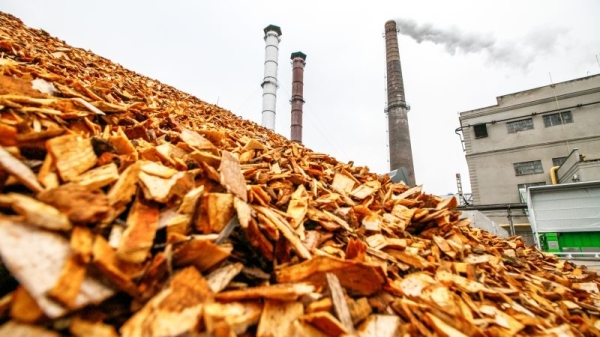Will the EU’s renewables directive change the landscape for forest biomass?

The EU’s revised Renewable Energy Directive strengthens the sustainability criteria for biomass heat and power, but the compromise text means it might only lead to limited improvements in the short term, argue Gemma Toop and Michèle Koper.
A provisional agreement on the Renewable Energy Directive (REDIII) was reached between the European Council, European Parliament, and the European Commission on 30 March 2023.
REDIII is part of the ‘Fit for 55’ package, bringing EU legislation in line with the 2030 greenhouse gas emission reduction goal.
Biomass currently contributes around 60% of EU renewable energy, across the electricity, heat and transport sectors. There is no doubt biomass will be needed to meet the increased renewable energy target of 42.5% in 2030.
Agreeing on the sustainability criteria for forest biomass was a major sticking point for REDIII negotiators. Mandatory sustainability criteria for biomass used in heat and power were only introduced to the previous version of the directive – REDII – from 2021.
For REDIII, some parties pushed to further strengthen those criteria to ensure sustainable biomass use.
The Parliament position even proposed to exclude primary woody biomass from the EU’s renewable energy targets, arguing that the focus needs to be on regrowing forests as carbon sinks in the face of climate change.
Others wanted to continue implementing the existing sustainability provisions, given they were only introduced less than two years ago.
The final agreed text does not ban the use of forest biomass for energy, but it does include significant updates to strengthen the sustainability requirements.
There are three key updates to be aware of, but the implementation of these updates may be limited by significant exemptions.
Implementing the cascading principle for biomass
A key update is to ensure that Member States implement the so-called ‘cascading principle’.
This principle aims to ensure that “woody biomass is used according to its highest economic and environmental added value”, being prioritised first for wood-based products, before being recycled, burned for energy or disposed of.
The concept was mentioned in REDII, but the updated directive now provides more concrete detail on how this principle should be implemented.
Strengthening sustainability criteria to protect biodiversity and habitats
Secondly, the mandatory sustainability criteria for forest biomass are extended with more detail on what is regarded as sustainable harvesting, such as no conversion of forest land into plantations, minimising large clear cuts, no use of roots or stumps and no degradation of primary or old growth forest.
Furthermore, Member States may not grant direct financial support for the use of saw logs, veneer logs, industrial-grade roundwood, stumps or roots for energy.
These additions, in combination with the link to reporting domestic forest supply and compatibility with LULUCF (land-use, land-use change and forestry) targets, provide at least a strengthening of protections for natural habitats and biodiversity in comparison to REDII.
Lowering the capacity threshold and not supporting electricity-only installations
Thirdly, under REDIII, Member States will not be allowed to grant new or renewed support for electricity-only installations using forest biomass (with certain exceptions).
In addition, the capacity threshold for installations that need to comply with the sustainability criteria for biomass fuels is lowered from 20 MW to 7.5 MW, and a new threshold is added for installations producing gaseous biomass fuels.
Exemptions risk undermining the implementation
While these three key updates generally raise the level of ambition, exemptions could undermine implementation.
Plants already operating in 2020 producing heat and power could be exempted from the minimum GHG saving requirements until 2030, potentially allowing a wider range of globally produced feedstocks to be used and reducing the GHG impact that could be obtained from these plants.
Furthermore, Member States may also count energy from biomass fuels that comply with the previous (less stringent) RED II criteria towards their renewable energy targets until the end of 2030, if support was already granted to that installation before the Member State has transposed the RED III.
This allows room for many existing installations to delay complying with the strengthened criteria.
Conclusion
Overall, negotiators have achieved the impressive feat of agreeing on a compromise position on what has at times seemed like an unagreeable brief.
But the final position is exactly that – a compromise. The criteria are not as strict as they might have been, but they are stricter than they were.
The detail on the cascading principle is surely a strong step towards steering limited forest biomass resources towards their highest value use – both from an economic and a carbon sink perspective.
However, the proof of whether the European industry can deliver a sustainable contribution of biomass fuels will be in the implementation, and whether the strengthened REDIII criteria can be implemented without being undermined by the exemptions.



